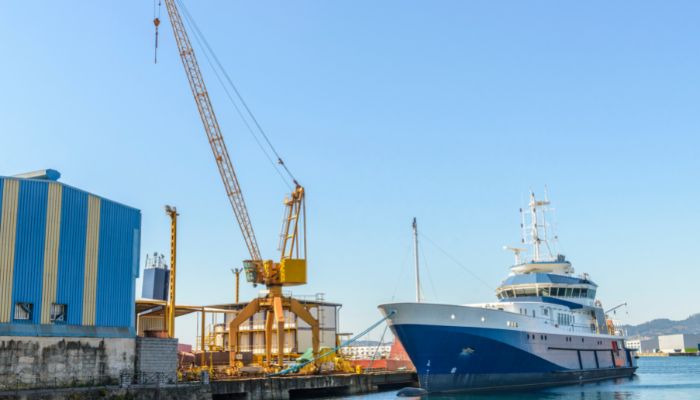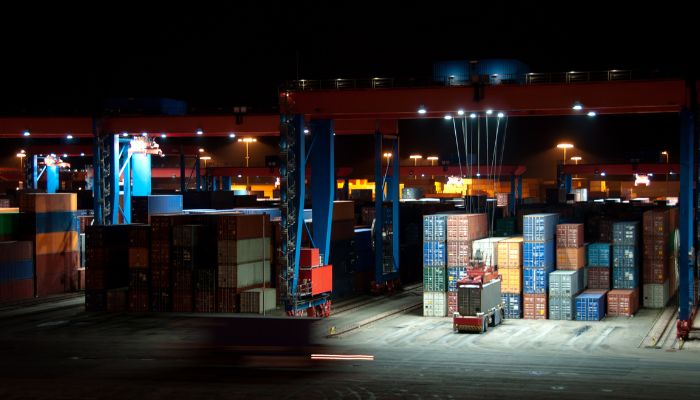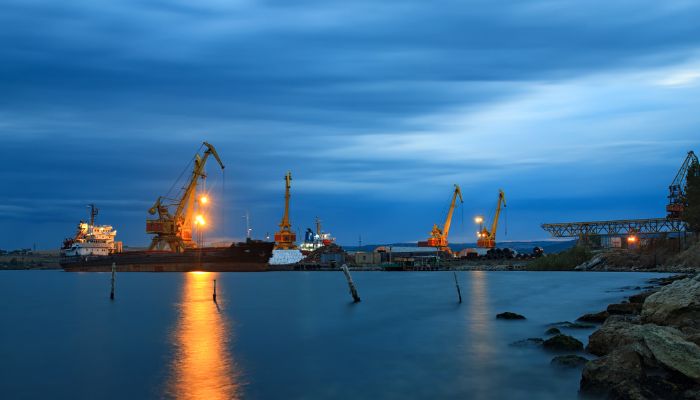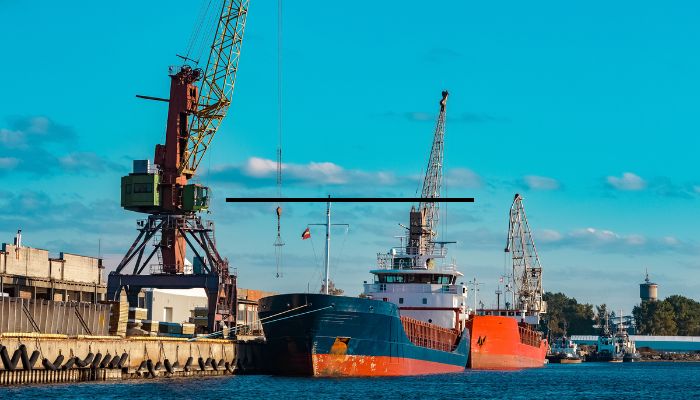

The Republic of Serbia is a landlocked nation spanning Southeast and Central Europe. It is situated amidst the breathtaking Pannonian plain and the Balkan region. Hungary surrounds the country from the northern side. At the same time, Romania lies to its northeast, Macedonia towards the south, Bulgaria to the southeast, Croatia, Bosnia and Herzegovina towards the west and Montenegro towards the southwest.
The economy of Serbia is classified as upper-middle income. The service sector leads growth, followed by industry, manufacturing and agriculture.
It witnessed strong economic development in the 2000s when it faced the aftermath of the global financial crisis. The country is trying to recover and has attracted significant foreign direct investment.
Agro-based products, especially fruits, are exported large quantities, the largest market being the European Union Countries. Serbia is one of the world’s largest producers of plums, raspberries, maise and wheat. Other essential items include sunflowers, soybean, apples, poultry, dairy, pork, beef etc. It has many vineyards that produce over 200 million litres of wine annually.
Serbia is a market-driven economy. It has many factories and industries, the principal ones being the automotive industry, mining, food processing, electronics, apparel, non-ferrous metals and pharmaceuticals. It also manufactures tesla smartphones.
Serbia is a crucial steel manufacturer in Southeastern Europe and delivered over two million tons of the metal in 2018, produced entirely in the Smederevo mill, owned and operated by the Chinese company Hesteel.
The mining sector is strong and quite competitive. Serbia ranks seventh in Europe in terms of coal extraction, procured from the mines in Kolubara and Kostolac. Copper is also abundant, making it the third-largest copper producer in Europe. Gold is found near Majdanpek.
The nation’s food industry is well-known around the world. Some famous names are PepsiCo and Nestle, Coca-Cola and Carlsberg. The electronics industry was at its prime in the 1990s. However, it witnessed a revival in the last ten years with private investments in companies such as Siemens, Panasonic and Gorenje.
The domestic production of medicinal drugs meets over 50% of global demand. Serbia has more than a dozen makers of generic drugs, the biggest being Hemofarm and Galenika.
Lastly, Serbia also has sufficient reserves of energy resources. It is a crucial exporter of electricity and imports fuel like oil and natural gas. It has many hydroelectric and thermal power plants.
Serbia has a strong transportation network that links the country with its neighbours, Europe, Asia Minor and the Middle East. It has a well-developed inland water transportation system since there are around 1716 kilometres of navigable waterways.
The most important waterway for maritime trade is the Danube river which has the country’s only port, the port of Belgrade. Danube river is a part of the Pan-European Corridor VII. The Sava, Begej and Timis are other rivers that flow through the territory and link Serbia with northern and western countries of Europe via the Rhine-Main-Danube Canal and the North Sea route.
Over 8.5 million tons of cargo were transported on these rivers and canals in 2018. In the first half of 2019, the river ports of Belgrade, Novi Sad, Pančevo, Smederevo, Prahovo and Šabac handles around 6.28 million tons of cargo.
Most cargoes handled consisted of gravel, followed by sand and stone, which accounted for 21% of total cargo traffic. After the construction, ores formed 20%, cereals 30%, and oil products 12% of the full cargo handled.
In 2020, 15.6 million tonnes of cargo was handled, an increase of 10.2%. One of the most frequently handled commodities was coal. However, passenger traffic declined substantially by 99% due to Covid-related restrictions.
Belgrade port handles general cargo and passengers. It is situated in the centre of Belgrade, close to the Pancevo bridge on the right bank of the river Danube. The port authority also manages the passenger terminal on the river Sava.
Belgrade port is the most developed river port in Serbia and handles 3 million tons of cargo and 10,000 TEUs annually. It contains 300,000 m2 of warehouse and storage space and 650,000 m2 of open storage.


The port was privatised in 2005 and dealt with salt, iron, sugar, paper, fertilisers and pipes.
The cargo terminal is located at the crossroads of two critical pan-European corridors, namely corridor seven and railway corridor 10. Near the port are the Headquarters of the Border Police, the headquarters of the Customs department, the Tourist Organization of the city, the office of exchange, many shops selling souvenirs and some eateries.
The passenger terminal lies on the Sava river bank. Its strategic location at the confluence of the Danube makes it an important transportation hub and market centre. It also has many tourist attractions, museums and historical sites.
It is also the main maritime gateway for people to enter Belgrade, the capital of Serbia, a country with a rich cultural heritage and unique charm.
The International Airport is quite close to the dock. In 2006 the port authorities invested in the terminal to become one of the most modern and technologically upgraded buildings in Serbia, at par with European standards. In this way, the port attracts investors and contributes to the growth of river tourism in the city and the country.
The passenger dock spans 200 metres and can accommodate six passenger ships simultaneously. Apart from anchorage and waste disposal facilities for vessels, electricity supply and fresh water are also available at the dock.
The history of trade near the present-day port of Novi Sad goes back to the middle ages. A proper port, however, was constructed in 1910 for boatmen who would berth close to the Novi Sad city lake. During the two world wars, it was the biggest commercial port in the region.
By the end of 2018, the government had privatised it. Currently, it is managed by DP World. The port of Novi Sad lies in the city of Novi Sad, the central part of Vojvodina, in the northern province of Serbia, on the left bank of the river Danube.
Apart from its exceptional location, which offers connections to the rail corridor, it has increased capacity to cater to international and domestic customers using multi-modal transport.


The port is well-linked with the ports in Bulgaria, Romania, and Ukraine, lying downstream on the Danube. It is also connected to the Black sea ports and the Mediterranean, Atlantic and Indian Oceans.
Important Ports upstream include Budapest in Hungary, Komarno in Slovakia, Vienna in Austria, and Regensberg in Germany. The Rhine-Main-Danube canal connects it to Switzerland, the Netherlands, and finally to the Atlantic Ocean and the North Sea.
The port covers six hectares of area and has a quayside with a depth of five to ten metres. Its 800-metre berth can accommodate around five vessels in a single row.
It also has 45,000 square metres of sheltered warehouse space and 100,000 square metres of open storage area, containing both public and bonded warehouses. Storage space is also available for rent.
DPT is a relatively new facility in Pancevo, close to a central railway hub in Serbia. It is a three-modal container facility that is well-connected to all international highways and the country’s principal industrial and logistics centre.


It has two industrial tracks stretching a thousand metres, a shunt for keeping wagons and a storage capacity of 30,000 m2. It also has three reach stackers and a public customs warehouse, and 32 plug-ins for containers to control temperature. It is equipped with an automatic system for filling containers with bulk cargo. The container handling facility can store up to 3000 TEUs.
Smederevo city lies in the eastern part of Serbia, on the right bank of the Danube river, 28 miles from Belgrade. The port infrastructure consists of an old port which is being refurbished, a small marina, a terminal handling liquid Naftna Industrija Srbije cargoes and small wharfs located in the industrial area along the bank.
The port handles international cargo and is situated in the centre of the city, known as the city of iron and for producing grapes. Recently, the city has gained a reputation for being an industrial centre, with many heavy, heavy industries and others in light manufacturing. Previously, in the mid-1900s, it was a completely agricultural zone.


The port can reload 1.5 million tons of cargo annually. In 2019, the government invested 9.5 million euros in constructing a new railway terminal near the port. In 2020, it was announced that a new port terminal would be built for dealing with bulk and general cargo.
The project would allow the port to handle five million tons annually and increase the port’s transhipment capacity manifold. The old port would also be relocated from the centre to the industrial region for environmental reasons.
Prahovo is situated at the banks of the Danube, at the tripoint borders of three nations-Serbia, Bulgaria and Romania. Its location is ideal for developing a logistics complex and an industrial chemical park.
In the east, the river links it to the port of Constanta in the black sea, the most important port in the area. Towards the north, the port is connected to Rotterdam port and Mannheim, an essential transport hub and the heart of Europe’s chemical industry. The port has many customers and a broad reach due to its advantageous location.


Elixir Group operates the port, which contains around 700 metres of coastline, enough for berthing seven ships. It also has facilities for accommodating and storing cargo from barges, wagons and trucks.
Its transhipment capacity is roughly two million tons annually. However, there are plans to expand it further and increase its capacity to 4 million tonnes. A few warehouses are also being built.
You might also like to read-
Disclaimer: The author’s views expressed in this article do not necessarily reflect the views of The Marine Learners. Data and charts, if used, in the article have been sourced from available information and have not been authenticated by any statutory authority. The author and The Marine Learners do not claim it to be accurate nor accept any responsibility for the same. The views constitute only the opinions and do not constitute any guidelines or recommendations on any course of action to be followed by the reader.
The article or images cannot be reproduced, copied, shared, or used in any form without the permission of the author and The Marine Learners.










We believe that knowledge is power, and we’re committed to empowering our readers with the information and resources they need to succeed in the merchant navy industry.
Whether you’re looking for advice on career planning, news and analysis, or just want to connect with other aspiring merchant navy applicants, The Marine Learners is the place to be.